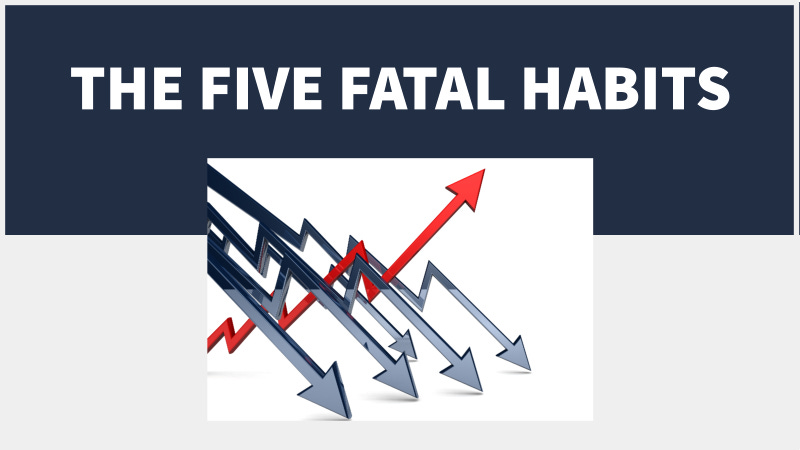“He that will not apply new remedies must expect new evils; for time is the greatest innovator.” — Sir Francis Bacon (1625) 1
How to go about creating the kind of future-fit culture of innovation, agility, and adaptiveness organisations need if they’re to thrive in an increasingly uncertain and unpredictable world?
Below are various free learning resources to help you answer that question in ways that work in your unique organisational circumstances.
These resources are relevant to change catalysts currently actively engaged in cultural transformation work, those seeking or aspiring to become more engaged in such work, and senior executives championing, sponsoring, and supporting culture change in their organisations.
Six short videos:
Video 1 - The need to encourage diverse perspectives but avoid fragmentation (1 min 33s)
Diversity in people’s perspectives, thinking, and outlook is the lifeblood of innovation, agility, and adaptiveness. The challenge on the flip side is that diversity also significantly increases the risk of misunderstandings, mistakes, and missed opportunities. The video above sets out both the nature of the challenge and its solution.
Video 2 - Overcoming fiefdoms, factions, and silos (3 mins 47s)
Over time, different areas in an organisation tend towards entrenched localised perspectives. This encourages fragmentation, which is the number one organisational barrier to innovation, agility, and adaptiveness. The video above explores why this happens and how to systemically prevent it.
Video 3 - 2D3D Mindsets are the Cultural Foundation of Future-Fit Organisations (5 mins 24s)
A fundamental human characteristic is that we each form our own unique, individual perspectives on a shared reality. Each of our perspectives is inherently incomplete, biased, and one-sided — in effect a two dimensional or “2D” take on the bigger picture three dimensional or “3D” reality. The video above lays out why 2D3D mindsets are the essential cultural foundation for creating a future-fit culture of innovation, agility, and adaptiveness.
Video 4 - The usual change methods don’t work for creating future-fit, innovative, agile organisations (5 mins 59s)
There are four main methods that organisations have traditionally used in their culture change efforts. Unfortunately, these don’t work for creating future-fit cultures. Watch the video above to find out if you’re setting yourself up to fail by using any of these methods.
Video 5 - Achieving leverage by focusing on Key Influencer Mindsets (6 mins 29s)
It’s hard to focus culture change efforts until you learn to see an organisation’s culture as the system of mindsets that forms and informs people’s awareness of “the way we do things around here”. Then, as when seeking any systemic change, the smart move is to find and focus on the leverage points within the system. The video above identifies how maximum culture change leverage is achieved — by shifting key influencer mindsets.
Video 6 - The #1 personal barrier to creating future-fit cultures (6 mins 27s)
Seeing-Being Traps occur when our seeing gets entangled and enmeshed with our being. We can all easily fall into this trap — but it’s systemically problematic when this happens to key influencers. The above video explains how we can help ourselves and others escape and avoid these traps.
Reading materials:
Cultural transformation only succeeds when it’s led, guided, and delivered by the people working in the organisation themselves.
The vast majority of transformational change efforts are set up to fail from the outset because they’re driven by mainstream management consulting firms whose existential imperative is keeping large numbers of junior consultants on client fees for as long as possible.
As a consequence, organisations have been consistently stymied in their efforts to become future-fit — due to five fatal habits systemically reinforced by the mainstream management consulting business model.
Habit #1: “One Best Way” Thinking.
This is a legacy that stems from the Scientific Management principles established, embodied, and embedded over more than a century. Overcoming this fatal habit allows an organisation to leverage its own unique opportunities to achieve greater success with less effort and risk.
Habit #2: “All or Nothing” Thinking.
This is a legacy that stems from the Strategic Planning era of the 1960’s to 1990’s. Overcoming this fatal habit enables lower risk, higher leverage, iterative value creation.
Habit #3: Leadership that Creates Followers.
This is a legacy that stems from traditional and now woefully out of date notions of what leadership means. Overcoming this fatal habit develops and deepens an organisation’s future-fit leadership capacity.
Habit #4: Wasting People’s Strengths.
This is a legacy that stems from traditional Human Resources practices based on adjusting people to fit roles instead of adjusting roles to fit people. Overcoming this fatal habit unleashes the collective human capacity for innovation & agility.
Habit #5: Hired Help that Hinders.
This is a legacy that stems from more than a century of traditional ‘help’ from mainstream management consulting firms operating the finders, minders, grinders business model. Overcoming this fatal habit is crucial if an organisation is to break free from ongoing systemic reinforcement of all five fatal habits.
To find out more download the full 22-page report on the Five Fatal Habits here.
From essay, Of Innovations (1625). As collected and translated in The Works of Francis Bacon (1765), Vol. 1, 479.





